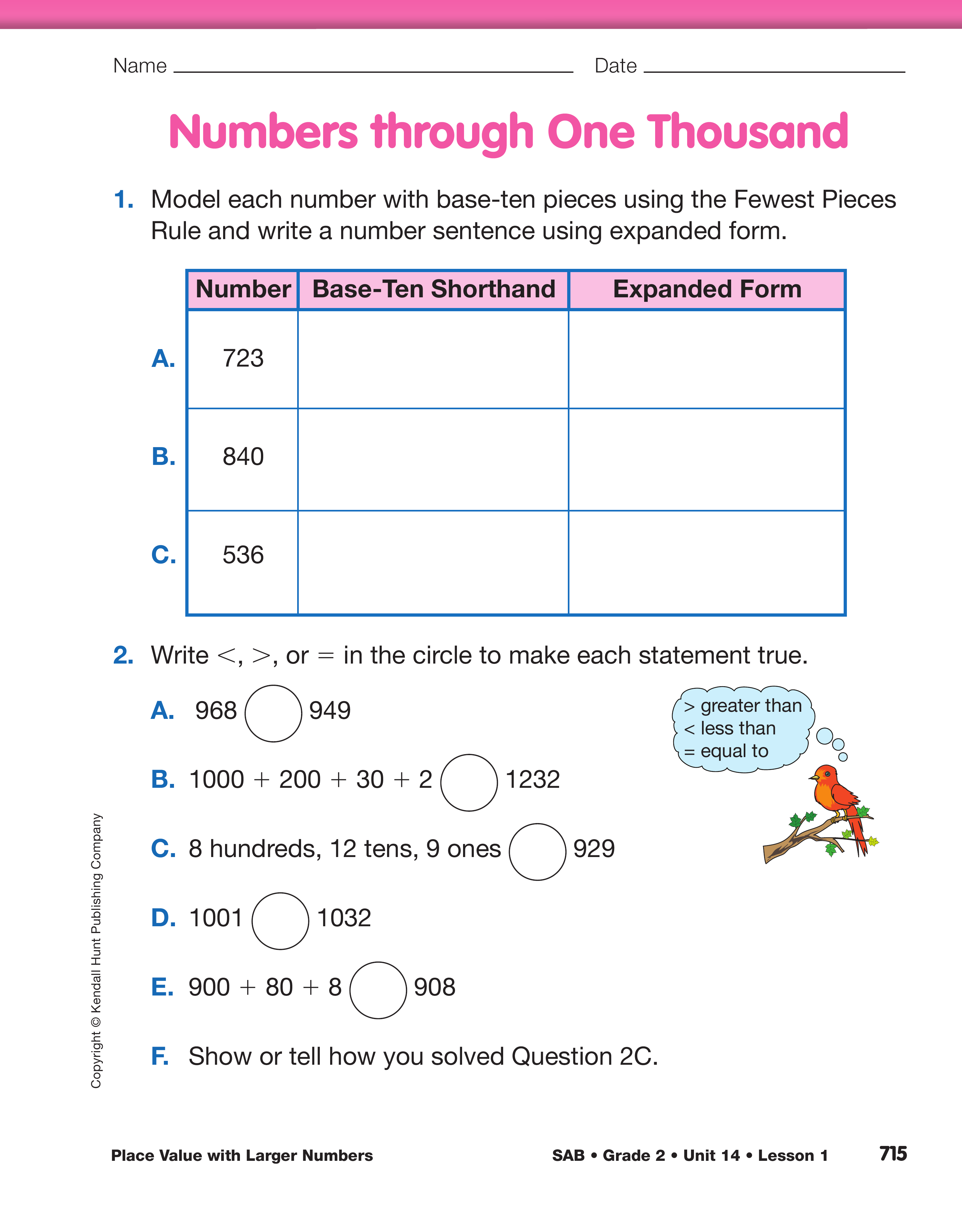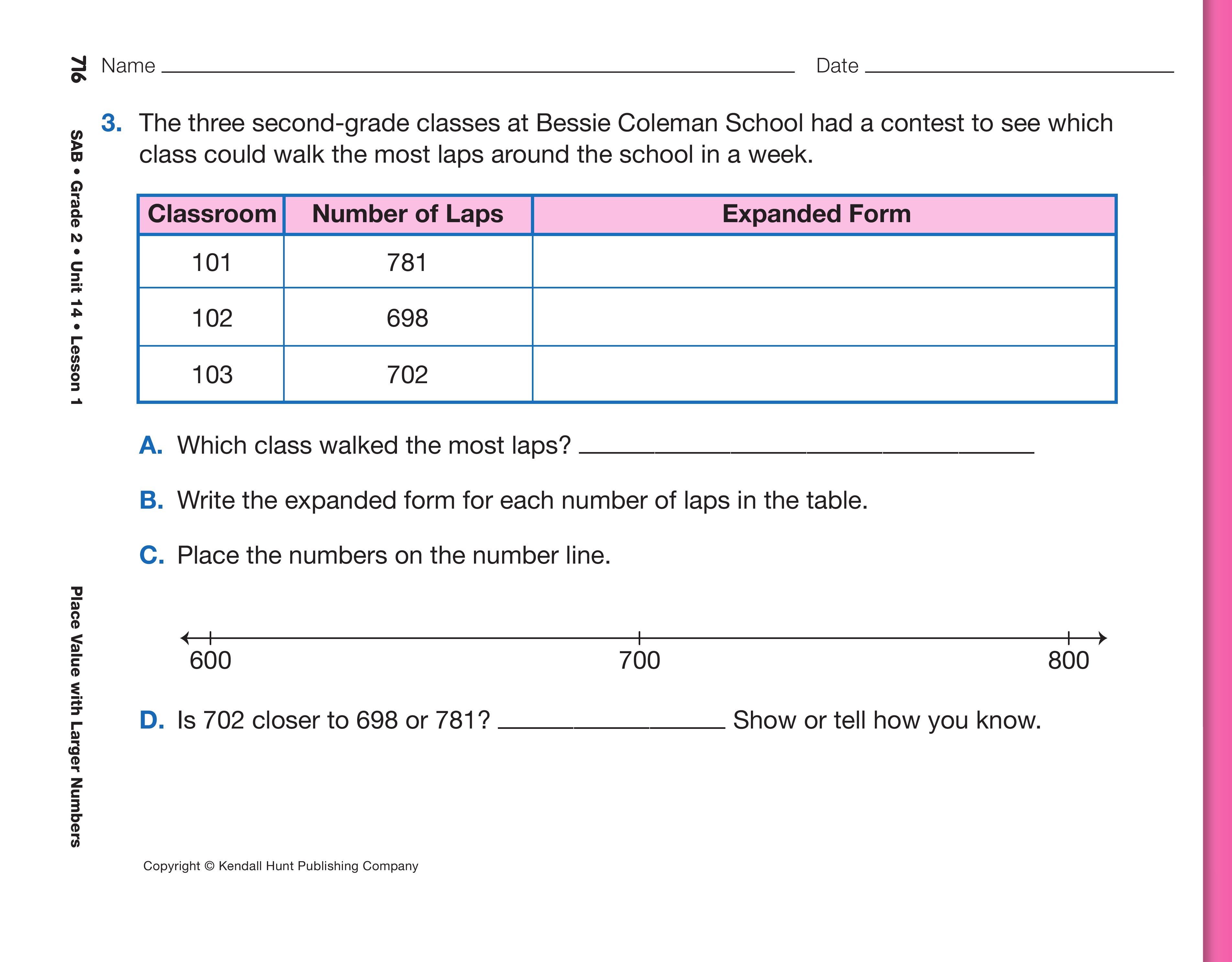Place Value with Larger Numbers
Est. Class Sessions: 2Summarizing the Lesson
Play Bubble Sort. Tell students they are going to play a game called Bubble Sort. Explain that everyone will receive a number and they have to place the numbers in order from smallest to largest. Have students come up to the front of the room and make a line across the room. Randomly distribute the slips of paper with numbers you prepared prior to the lesson. See Materials Preparation. Tell students they are going to compare their number with their neighbor's number and decide if their number is smaller or larger. See Content Note.
You can serve as the leader or you can choose a student to help lead the activity. The sorting begins when the leader says, "Compare." At the command, pairs of adjacent students compare their numbers. There are two important rules for this activity: You can talk only with the two people on either side of you, and you can trade places only with the person who is next to you. The student with the smaller number moves to the right. The student with the larger number moves to the left. If a pair of students is already in order, they stay in their places. Remind students that they are just comparing and switching with the student next to them until the leader says, "Compare" again. Repeat the procedure until no more switches need to be made. Have students say their numbers from smallest to largest and make any necessary adjustments.

















